Words and Music

Brief Synopsis
Cast & Crew
Norman Taurog
Perry Como
Mickey Rooney
Ann Sothern
Tom Drake
Betty Garrett
Film Details
Technical Specs

Synopsis
In New York City, in 1919, Lorenz "Larry" Hart, a diminutive, twenty-five-year-old lyricist, has created words to make hit songs but lacks music to accompany them. Larry's search for a suitable composer to bring his lyrics to life ends on a spring day when his friend, Herbert Fields, introduces him to Richard Rodgers, a talented composer who is looking for a good lyricist. Although Dick is initially offended by Larry's impertinent and erratic behavior, he and Larry eventually forge a close friendship, devoting themselves entirely to the creation of songs. Despite their hard work, two years pass without a single contract with a producer. Dick loses hope and decides to take a job selling infant clothing for fifty dollars a week. Though Larry is more optimistic about their future, he accepts Dick's departure and hosts a farewell party for him. At the party, Larry meets Peggy Lorgan McNeil, a young singer, and falls instantly in love with her. The evening ends on a happy note when Herb arrives with news that the Theatre Guild wants to produce Larry and Dick's first show, Garrick Gaieties . The show soon opens on Broadway with Eddie Lorrison Anders in the leading role, and critics award the musical with very favorable reviews. Larry and Dick's success continues with the sale of their next musical, which will star Gene Kelly. Exhilarated by the news of the sale, Larry immediately telephones Peggy and, without consulting the producers, promises her the feminine lead in the show. Determined to win Peggy's affections, Larry buys a pair of shoes with special heels that will add two inches to his height. His exuberance is dashed, however, when Herb and Dick inform him that actress Joyce Harmon has been selected by Kelly to play the female lead. When Larry breaks the news to Peggy, she tells him that she will be leaving New York to go on the road with another show. Dick, meanwhile, tries to begin a romance with Joyce, but she rejects him because he is ten years younger than she. Later, Dick invites Dorothy Feiner, the sister of his old friend Ben, to the movies, but she rejects his offer, insisting that he is too old for her. Larry, who has not given up on Peggy, makes another desperate attempt to woo her and proposes marriage, but she shows little interest in him. Following a brief estrangement, Larry and Dick resume their partnership and travel to London to work on their next successful show, The Girl Friend , which allows them to return to America and follow it up with Connecticut Yankee . Despite this string of successes, Larry becomes restless and sinks into a depression. At Dick's suggestion, Larry offers the leading role in their next show to Peggy, who is in California. The prospect of seeing Peggy again gladdens Larry, but his joy is soon dashed when Peggy declines the offer and informs him that she has signed a motion picture contract. Devastated by the rejection, Larry abandons Dick just before the opening of Connecticut Yankee and goes to Hollywood to search for Peggy. Dick, meanwhile, sparks a romance with Dorothy, and they eventually become engaged. When Larry returns to New York, Dick and Dorothy tell him about their engagement and invite him to move to Los Angeles with them to pursue a career in motion pictures. Larry makes a fresh start in California, and soon after buying a large house in the Hollywood Hills, throws a lavish, star-studded party. Dorothy and Dick attend Larry's party, as does Judy Garland, who agrees to do a picture with Larry and Dick. Larry is drunk at the end of the evening, and, after the guests leave, he winds up alone in his big house. Years pass, and Dorothy and Dick, who now have two children, decide to return to New York to do a Broadway show. Larry, however, sinks into greater despair, and another period in which Dick loses contact with Larry ensues. Larry takes to wandering the city streets and consorting with shady characters until one day, he hears one of his songs being sung inside a nightclub. The song prompts Larry to return to Dick and continue his work. A new musical by Dick and Larry, On Your Toes , soon opens in New York, but Larry, who is spiritually exhausted, collapses in the lobby right after the show. A lengthy illness follows and Larry is confined to a hospital bed for several months. When a revival of Connecticut Yankee opens on Broadway, Larry escapes from the hospital and arrives at the theater in a tragic state. Larry leaves the theater gasping for air, and dies in front of the shoe store where he bought his special height-enhancing shoes. Months later, Larry is honored in a musical tribute, during which Dick fondly recalls their twenty-year friendship.

Director

Norman Taurog
Cast

Perry Como

Mickey Rooney

Ann Sothern

Tom Drake
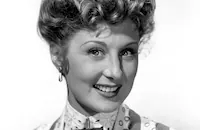
Betty Garrett

Janet Leigh

Marshall Thompson
Jeanette Nolan

Richard Quine

Clinton Sundberg
Harry Antrim
Ilka Gruning
Emory Parnell
Helen Spring
Edward Earle
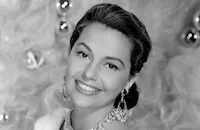
Cyd Charisse
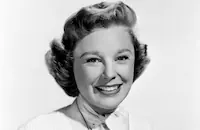
June Allyson

Judy Garland
Mel Torme

Lena Horne

Gene Kelly

Vera-ellen
Dee Turnell
The Blackburn Twins
Allyn Mclearie
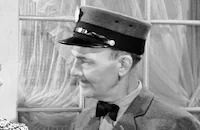
John Butler
Marietta Canty

Irving Bacon
Alex Pollard
Sandra Spence
Sue Casey
Martha Montgomery
Rita Rend
Mary Ellen Gleason
Dorothy Abbott

George Meeker
George Carleton
Damian O'flynn
Robert Graham
Doris Kemper
George Davis
Al Thompson
Jeffrey Sayre
William Fawcett
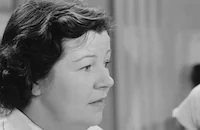
Margaret Bert
Sig Frohlich
Sherry Hall
Gino Corrado
William "bill" Phillips
Joe Cook Jr.
George Boyce
Jack Sterling
June Hedin
Eilene Janssen
William Cabanne
Jack Brady Jr.
Don Hayden
Robert Manning
Robert Miles
Peter Ellis
Nora Christy
Mary Stack
Lora Lee Michel
Stanley Blystone
Irving Smith
George Spaulding
Russ Clark
Kathleen O'malley
Mary Jo Ellis
Candy Toxton
Frank Mayo
Bob Spencer
Crew
Albert Akst
Robert Alton
Frank Barnes
Guy Bolton
Jack Dawn
Ben Feiner Jr.
Fred Finklehoffe
Arthur Freed
Dave Friedman
Cedric Gibbons
James Gooch
Jack Greenwood
Lorenz Hart
Lennie Hayton
Jerome Hester
Jean Holloway
Eylla Jacobus
Natalie Kalmus
Warren Newcombe
John M. Nickolaus Jr.
Richard A. Pefferle
Richard Rodgers
Helen Rose
Charles Rosher
Conrad Salinger
Douglas Shearer
Jack Martin Smith
Harry Stradling
Robert Tucker
Valles
Ferris Webster
John A. Williams
Edwin B. Willis
Dolph Zimmer

Photo Collections
Film Details
Technical Specs

Articles
Words and Music
Most critics panned the bare bones plot but showered praise on the sparkling musical numbers that were liberally sprinkled throughout the movie. According to a Variety review at the time, MGM had made the Rodgers and Hart biopic a "slim and pleasant framework on which to hang some 22 of their most melodious and best-known tunes." Many of the musical stars played themselves or small character parts so they could convincingly break into song at some point in the film. June Allyson, Perry Como, Ann Sothern, Mel Tormé and Cyd Charisse were just some of the singing sensations in the extravaganza.
Among the singing standouts was Lena Horne, who appeared as herself singing in a nightclub scene. Horne was among the few singled out in reviews for special accolades. "The best number in the show will be Lena Horne's sweet enunciation of the haunting `Where or When,'" the New York Times reviewer wrote, while Newsweek reported, "Lena Horne... brings the film to its toes with her vocalization of `Where or When' and `The Lady is a Tramp.'" Horne had numerous fans on the Words and Music set, too. In her autobiography There Really Was a Hollywood, Janet Leigh recalls the electricity while filming Horne's scenes at the nightclub surrounded by tables of extras: "Those eyes were so on fire they needed an extinguisher, that mouth passionately caressed each word, each syllable. She was dynamite. It wasn't in the script but the `audience' spontaneously responded with a standing ovations."
Also earning high marks from fans and critics alike was Judy Garland, appearing as herself, too. She first sings solo the showstopper "Johnny One Note," and then duets with familiar screen partner Rooney in "I Wish I Were in Love Again." The tune had been cut from the original score of the 1939 Garland-Rooney hit Babes in Arms because it was considered then too sophisticated. Leigh writes in her autobiography that crowds of people arrived on the set the morning Garland was scheduled to appear for a glimpse of the superstar. But they had a long wait. "Normally, Mickey would have boiled over, but he was only calm and patient. He knew, I guess most knew (except me), that Judy had been going through one of her rough periods and was having trouble pulling herself together. Around eleven o'clock [producer Arthur Freed] escorted Miss Garland to the stage, where she was greeted like royalty."
Rooney, himself, wrote in his autobiography Life Is Too Short that he wasn't very dependable while making Words and Music, either. It was his last picture under contract to MGM, and he was going out at night and drinking heavily with a crowd led by bandleader Tommy Dorsey. His hangovers got so bad he started skipping work on Mondays to help recover. "Our old friend [director] Norman Taurog shot around me and Judy. It was a wonder that the picture went only $140,000 over budget."
Words and Music also features the first full-length modern ballet piece in a Hollywood movie. Choreographed and danced by Gene Kelly, with Vera-Ellen as his partner, "Slaughter on Tenth Avenue" provided the show-stopping seven-minute finale to the film. Originally appearing in the Rodgers and Hart Broadway musical comedy On Your Toes, the music was used by Kelly to tell the story via dance of a sad love affair on the New York streets. Vera-Ellen always considered it the best work of her Hollywood career.
Like many biographical movies, Words and Music glosses over the real lives and relationship between Rodgers and Hart, the men behind the clever words and brilliant music of so many songs. But with the abundance of hits by the duo in the movie - such as "I Married an Angel," "Blue Moon," and "Thou Swell" - "one gladly forgives the story - which doesn't matter," as the Hollywood Reporter noted.
Producer: Arthur Freed
Director: Norman Taurog
Screenplay: Guy Bolton, Ben Feiner, Jr., Fred F. Finklehoffe, Jean Holloway
Cinematography: Charles Rosher, Harry Stradling, Sr.
Film Editing: Albert Akst, Ferris Webster
Art Direction: Cedric Gibbons, Jack Martin Smith
Music: Richard Rodgers
Cast: Mickey Rooney (Lorenz Hart), Perry Como (Eddie Lorrison Anders), Tom Drake (Richard Rodgers), Ann Sothern (Joyce Harmon), Cyd Charisse (Margo Grant), Betty Garrett (Peggy Lorgan McNeil).
C-122m. Closed captioning.
by Amy Cox

Words and Music
Words and Music - Tom Drake and Mickey Rooney star as the Songwriting Team of Rodgers and Hart in WORDS AND MUSIC on DVD
Synopsis: Broadway hopefuls Richard Rodgers and Lorenz "Lorry" Hart (Tom Drake & Mickey Rooney) have difficulties finding acceptance for their innovative songs. When finally launched as a composer-lyricist duo, success rains down on them both. But their personal relationships differ greatly. Richard is lucky in love and marries Dorothy Feiner (Janet Leigh), the sister of a friend. Lorry reels from bouts of depression and becomes an erratic collaborator, disappearing at odd times.
Several of the musical numbers in Words and Music are considered classics, but the connecting biographical segments are kitsch of the highest order. Tom Drake is a bland Richard Rodgers while Mickey Rooney as Lorenz Hart is, well, Mickey Rooney. The large cast is drawn from the MGM acting stable, some of whom worked with Rodgers and Hart both in films and on Broadway. Gene Kelly, for instance, gained stardom in their musical play Pal Joey. This creates a bizarre situation in which some actors (Marshall Thompson, Cyd Charisse, Janet Leigh) are playing characters, and some (Gene Kelly, June Allyson, Vera-Ellen) play themselves. When Rooney and Garland are on screen together, they have to pretend that she's herself but Mickey is somebody else. Meanwhile, Perry Como wanders through several songs as Eddie Lorrison Anders, when we all know he's Perry Como. Audiences had to be confused.
The songwriters' career arc provides emotional cues for the film's fourteen musical numbers, a parade of sparkling Rodgers and Hart hits. Words and Music doesn't present the songs in the order they were written, and we don't see original Broadway staging or choreography. The production numbers look more or less like generic 1940s MGM work with updated dancing. A ballet corps falls out to accompany Cyd Charisse for one number, and Gene Kelly turns Slaughter on Tenth Avenue into his first major dance-narrative set piece.
A number of songs are associated with specific characters. Betty Garrett sings There's a Small Hotel at a party; Rooney demos his lyrics for Manhattan at the piano. Rooney and Garland (as Hart and Garland) entertain a party with an impromptu rendition of I Wish I Were in Love Again, a showcase for lyricist Hart's elaborate interior rhymes. Billed as himself but pretending to be a bandleader, Mel Tormé warbles Blue Moon to Lorry at the end of an all-night party. Most of the other numbers are on stage or in nightclubs: Mountain Greenery (Perry Como), Where's that Rainbow (Ann Southern) and Thou Swell (June Allyson). Lena Horne sings The Lady is a Tramp and Where or When in a stunning nightclub sequence purposely designed so that it could be cut out without harming the film's continuity: Major theaters in Southern communities would not play movies with African-American performers.
For a semi-tragic ending Words and Music has a rather foolish-looking Mickey Rooney stumble from his hospital bed and rush to the theater. The real climax, and the lasting reason for watching the movie, is Gene Kelly's Slaughter on Tenth Avenue. In the 1936 stage show On Your Toes Ray Bolger performed it in more of a comedy mode. Kelly and Vera-Ellen dance a straight seven-minutes of tour-de-force jazz ballet with some fairly strong erotic content. Audiences apparently responded enthusiastically; Kelly proudly showcased the number whenever he made a 'career highlights' personal appearance.
Warners' DVD presentation of Words and Music accurately replicates the film's overpowering Technicolor and is free of visible damage. The disc producers come through with excellent extras. Richard Barrios may be the best musical commentator yet, offering well-researched insights and a fair-minded attitude toward the film's twisted back-story. Barrios describes the frustrations encountered by the real Rodgers and Hart when they worked in Hollywood, writing scores of songs that were never used. That experience explains why the composer demanded complete artistic and business control over the film versions of his later Oscar Hammerstein hits, starting with Oklahoma! Barrios also explains the reasons behind wild continuity shifts in the film, as when, between two songs in the same scene, Judy Garland's dress and hair make a sudden radical change.
Richard Barrios also appears in Peter Fitzgerald's featurette A Life in Words and Music which lets us see what the real Rodgers and Hart looked like. Mickey Rooney briefly describes his working relationship with Judy Garland. Musical outtakes show Perry Como singing two more ultra-relaxed songs, and another menu choice leads to a full gallery of audio outtakes. In addition to an original trailer, we're given a short subject about Los Angeles firemen (directed by Gunther V. Fritsch of Curse of the Cat People) and the surreal Tex Avery cartoon The Cat that Hated People.
For more information about Words and Music, visit Warner Video. To order Words and Music, go to TCM Shopping.
by Glenn Erickson
Words and Music - Tom Drake and Mickey Rooney star as the Songwriting Team of Rodgers and Hart in WORDS AND MUSIC on DVD
Quotes
Trivia
The song "I Wish I Were In Love Again" was the last time 'Garland, Judy' and 'Rooney, Mickey' appeared on screen together.
'Judy Garland' was not intended to be in this film, but Mayer offered her $50,000 (or half of what she owed to the studio for medical bills) to do one take. In the first screening, the fans asked for more of Judy, so Mayer offered her another $50,000 to do another song. By the time her parts were done, she had paid back the studio but had made nothing.
Notes
The working title of this film was The Lives of Rodgers and Hart. The film opens with a voice-over introduction spoken by Tom Drake as "Richard Rodgers" and closes with a eulogy of Lorenz Milton Hart delivered by Gene Kelly. The first fifteen cast credits listed above reflect the order in which the credits appear at the end of the film. Kelly, Allyson, Garland, Drake and the other actors who appear as themselves are billed only in the credits at the beginning of the film and are all listed before Mickey Rooney, who played Hart.
Rodgers, who was born in New York City on June 28, 1902 and died in 1979, wrote approximately five hundred songs in collaboration with lyricist Hart (1895-1943). Broadway audiences heard their first Rodgers and Hart song in the 1919 musical A Lonely Romeo. Following that show, Rodgers and Hart went on to create songs for twenty-nine Broadway musicals, culminating with By Jupiter, which opened in 1942. Rodgers and Hart also created songs for eight motion pictures, including the 1931 Warner Bros. film The Hot Heiress, and the 1933 Lewis Milestone picture Hallelujah, I'm a Bum. They left Hollywood in 1934, after their contract with M-G-M expired and after Hart completed work on the film The Merry Widow. Some of Rodger and Hart's stage musicals were adapted to the screen in the 1930s, including On Your Toes in 1939, and The Boys from Syracuse in 1940. Other film adaptations of Rodgers and Hart musicals include the 1957 Columbia film Pal Joey and the 1962 M-G-M film Jumbo. Several Rodgers and Hart songs were introduced in motion pictures, including "You Are Too Beautiful," "It's Easy to Remember" and "Lover."
Modern biographical sources indicate that Hart's homosexuality was common knowledge during his lifetime, yet Words and Music not only made no reference to Hart's private life but fabricated his romantic attachment to "Peggy McNeil" as well. In mid-1942 Rodgers broke up the long partnership with Hart and teamed with lyricist Oscar Hammerstein, II. Their first collaboration was Oklahoma!, the first of a string of successful musical shows. Partly in an effort to revitalize Hart, who was struggling with poor health, depression and alcoholism, Rodgers instigated a Broadway revival of Connecticut Yankee, to which Hart contributed lyrics for six news songs. Hart's health continued to decline, however, and he died November 23, 1943, one week after the show opened. Biographical accounts of Hart's final days indicate that he attended the premiere in a drunken state and was ejected from the theater. Hart was hospitalized soon thereafter and treated for a recurring bronchial condition. He died in his hospital bed one week later, and not, as the film depicts, on the sidewalk in front of the store where he bought his elevator shoes. For more information on the music and films of Rodgers and Hart, please consult the Personal Name Indexes and the Songwriters and Composers Indexes in this and other volumes of the AFI Catalog of Feature Films.

Miscellaneous Notes
Released in United States Winter December 1948
Released in United States Winter December 1948














